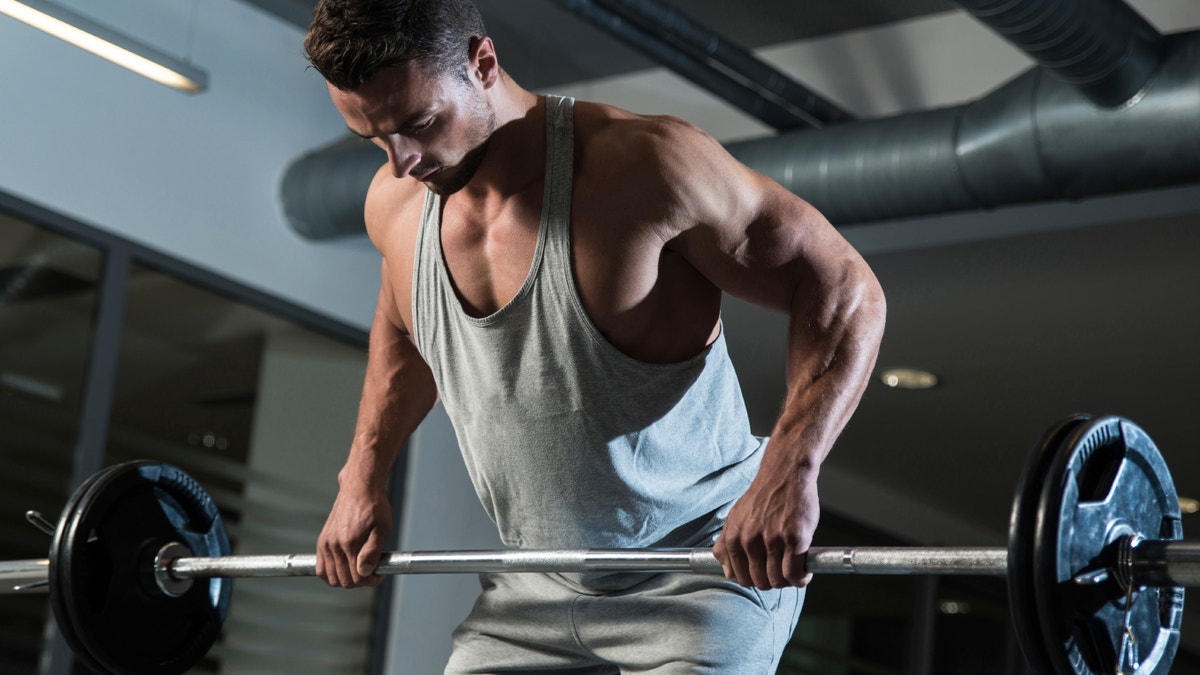
Pain and Gain (iStock)
CrossFit has a mascot known as Uncle Rhabdo, a muscle-y cartoon clown that’s hooked up to a dialysis machine. He represents the downside of extreme fitness: a serious condition called rhabdomyolysis. “When exercise utilizes all of the energy supply in the muscle cell, this leads to a chain of events culminating in the death of the cell,” David A. Wang, M.D., a sports medicine physician at Hospital for Special Surgery, told Fox News. When the muscle cell dies, it leaks its contents into the bloodstream, which can end up damaging the kidneys.
The connection between CrossFit and rhabdomyolysis
“CrossFit enthusiasts often push themselves through their workouts, working until failure, even when they feel pain,” Tania Dempsey, M.D., of Armonk Integrative Medicine, told Fox News. Combine that intensity with CrossFit’s strenuous exercises, and you’ll see why CrossFitters are at risk of developing rhabdomyolysis.
5 MILITARY-INSPIRED MOVES FOR A FULL-BODY WORKOUT
That’s not to say every CrossFitter will meet Uncle Rhabdo, though. “CrossFit could potentially put athletes in these situations, but the risk of rhabdomyolysis is not specific to CrossFit,” Wang said. A 2013 study published in the Journal of Strength and Condition Research polled 132 CrossFitters and found 73.5 percent were injured at some point during training, but none reported dealing with rhabdomyolysis.
Should you stay away from CrossFit?
Not necessarily. “I don't think the average CrossFitter needs to be worried,” said Kyle Lennon, M.D., of Northwell Health-GoHealth Urgent Care. “Rhabdomyolysis is rare, and the benefits of exercise generally far outweigh the risks.”
There are some habits you want to steer clear of, though, such as pushing yourself beyond your abilities or coming back from an injury and performing high reps with low weight until failure, Dempsey said.
HOW TO WORK OUT WITH YOUR FURNITURE
Certain people — like those taking statins to lower their cholesterol or those battling an illness — should proceed with caution, while those with a metabolic muscle disorder should stay away from CrossFit altogether, Wang said. Dehydration also increases your risk of rhabdomyolysis, so avoid hitting the CrossFit box if your urine is the color of cola, Lennon said.
How to reduce your risk
Working out is all about pushing your physical abilities, but make sure your body is ready for the demanding WODs (that’s “workout of the day” in CrossFit speak). “It is important to listen to your body and be careful not to overexert yourself,” Lennon said. A study slated for publication in the May issue of the Journal of Sports Medicine and Physical Fitness found progressing through training and giving the body enough time to recover can prevent rhabdomyolysis. “The intensity level of the workouts should be slowly increased over a period of weeks to months, to build endurance and muscle strength,” Dempsey said. It’s not only CrossFit newbies who are at risk. Trained athletes who push themselves too far, say if they’re trying to keep up with everyone else in the group, are too, Wang said.
FOLLOW US ON FACEBOOK FOR MORE FOX LIFESTYLE NEWS
The bottom line: Listen to your body. “If you don't feel well or drank alcohol the night before and didn't drink enough water, or your muscles are still sore from yesterday’s workout, take the day off and rest,” Dempsey said. “Your body and your muscles will thank you.”
